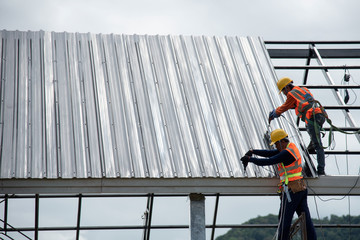Creating an eye-catching landscape doesn’t have to be expensive. There are plenty of one-time projects that can enhance your property’s beauty and increase its value.
Lawn Care: Fertilizer, weed control, and pest control. Mowing strategically for optimal grass height and alternating mowing directions to prevent soil compaction. Contact Prime Cut Lawn and Landscaping for professional help.
Planting drought-tolerant plants reduces long-term maintenance costs and invasive weeds. We also reseed and mulch garden beds.
Hardscaping refers to non-living elements that define and shape a lawn or landscape, such as stone paths, patios and walls. It contrasts with landscaping, which focuses on living elements like grass, flowers and trees. Together, they form a harmonious balance that enhances the beauty and function of outdoor areas.
A well-designed hardscape can transform the look of your yard, making it feel inviting and boosting your home’s curb appeal. It can also help you reduce the amount of maintenance required. Unlike plants and grass, hardscapes don’t need regular watering, mowing or trimming. And, because they’re made of durable materials like pavers, concrete and stone, they can last for years with very little upkeep.
The most common hardscape elements are paths that guide foot traffic, boundaries that define different areas of the garden and structures that provide a focal point. These can be created from a variety of materials, depending on your preferences and the aesthetics you want to achieve. For example, natural stone offers a rustic charm while pavers offer a more contemporary look. Careful planning and preparation are key to ensuring that your hardscaping elements are both functional and complement the natural environment. For example, if you choose to install a gazebo in your garden, you’ll need to consider how it will interact with the surrounding vegetation to avoid weather damage and falling branches.
In addition to being a beautiful design element, hardscapes can be incredibly functional. They can improve drainage, reduce erosion and prevent soil accumulation, which can help protect your plants and trees from flooding, mold and other water-related problems. In addition, when installed properly, hardscapes can also help you save money on energy bills by reducing heat transfer through the property.
In addition, hardscapes can be a great choice for people with limited mobility. Because they don’t require mowing or watering, they’re less likely to need maintenance than traditional gardens and can be easily accessed by wheelchairs and other mobility aids. For this reason, they can be an important part of any accessible garden. However, it’s essential to note that hardscapes should be carefully planned and implemented in order to ensure they are safe for use by those with disabilities.
Slate Walkways & Stepping Stones
Slate walkways are a beautiful addition to any lawn or landscape. The layered texture of this material is both timeless and modern, offering a classic, yet elegant appearance that enhances the beauty of your property. While a slate walkway may cost more than traditional grass or gravel options, it’s an investment that will last for years to come. Slate is also durable, so it resists damage from frequent use and harsh weather conditions. A slate pathway is easy to install, making it a budget-friendly option that provides significant curb appeal.
For a quick and affordable option, you can use wood chips to create a paved path in your yard. While this type of path is not as durable as a sand or gravel alternative, it’s a great choice for a simple walkway with minimal maintenance needs. If you choose a wood pathway, it is recommended to use a wood stain or paint to prolong the life of your walkway.
Stepping stones are another stylish and functional addition to your outdoor space. These easy-to-install stones can be set in a variety of ways to fit your landscape design. Choose from a wide range of natural stone materials, including slate and flagstone, to add elegance and style. You can even incorporate limestone or pea gravel to provide a more casual look. Whatever you choose, it’s important to ensure that the base is level for stability and safety.
Before installing the stepping stones, mark out your desired route. Use stakes or string to outline the desired path, ensuring symmetry and proper spacing between each stone. The space between stones should be adequate for comfortable gait, typically 18-24 inches apart. Once the stones are in place, a layer of sand or gravel should be spread and compacted to establish a firm foundation for the stones. A weed barrier can also be placed underneath the sand to prevent unwanted growth beneath your path.
After the sand or gravel is spread, it should be leveled with a hand tamper or mechanical compactor to improve drainage and help the stones stay in place. Fill in the gaps between stones with sand, gravel, or a specialty joint filler to prevent weed growth and keep your pathways looking polished. Periodically, hose down your walkway to settle the base material and reveal any areas that are collecting water. After a rain, sweep excess sand or gravel back into the joints for a clean finish.
Low Maintenance Grass
A well-maintained lawn is one of the best ways to increase your home’s curb appeal. However, maintaining your lawn can take up a lot of time and money, especially when you factor in watering, fertilizing, mowing, weed control, and other yard care tasks.
Whether your current yard is overgrown and out of control or you’re considering replacing it with more sustainable greenery, there are many low maintenance grass options to choose from. The key to finding the right option for you is understanding the characteristics of healthy grass.
Vibrant Green Color: When your grass is healthy, it has a deep, rich green color that’s pleasing to the eye. It also grows at a uniform rate, creating a carpet-like appearance without bare patches or uneven heights. Resistance to Weeds: Healthy grass is more resistant to weed invasions because it naturally crowds out unwanted plants. Disease Resistance: Healthy grass is more resilient against fungal diseases that can cause brown or discolored patches in the yard.
Soil Compaction: Overly compacted soil can restrict air circulation, inhibiting grass growth. Watering Inconsistently: Inconsistent watering can lead to shallow root systems, leaving the grass vulnerable to stress and disease. Thatch Buildup: A layer of dead grass and debris can accumulate on the surface of the soil, hindering nutrient absorption.
Turf Type Tall Fescue (TTTF) is an ideal option for homeowners in the transition zone who want a low maintenance lawn. It has a superior drought tolerance, disease resistance, and attractive deep green color compared to other fine fescue blends. It also requires less water than other cool season grasses and needs less fertilizer, making it a cost-effective alternative to traditional lawns in the transition zone.
For shady areas where traditional grass struggles to thrive, we can sow native perennials like astilbe, ferns, and hostas to provide color and texture to the landscape with minimal maintenance. Or, for those who prefer an eco-friendly option, consider sedge species that can thrive in a variety of soil conditions and light levels. Check your U.S. Department of Agriculture plant hardiness zone and prioritize native plants to your region.
Plantings
When trees, shrubs and grasses are combined with garden beds filled with flowers, ground covers and other low-maintenance plantings, they can create a rich vista that is appealing to the eye. The plants in your yard can also help improve air quality by absorbing pollutants through their leaves and roots before releasing clean oxygen back into the environment.
If you’re considering upgrading your landscape, it’s important to be realistic about what kind of time you can dedicate to caring for it. If you don’t have the time or are concerned about your ability to care for it, a professional lawn care service may be a good option.
Lawn and landscaping services can include mowing the lawn, edging the borders of the turf, fertilization, weed control and pest control. They can also install new plant materials, such as ground covers, shrubs and ornamental grasses, as well as low-maintenance annuals and perennials. A professional can help you make the best choices for your landscape based on the desired look and the conditions in your yard.
Before making your final decision, it’s a good idea to sketch out or create a vision board of the way you want your yard to look. This will help you determine what kinds of plants are appropriate for your landscape and where to place them so they grow in a healthy manner. For example, some shrubs and perennials thrive in the full sun while others require shady areas to survive.
It’s also a good idea to incorporate native plants into your yard, as they are more adapted to local climates and require less water and maintenance than non-native varieties. They also promote biodiversity and support the needs of local wildlife. Incorporating these plants in your yard can also reduce soil erosion, provide nutrient and moisture retention, help prevent floods and improve the health of your lawn and landscape.












